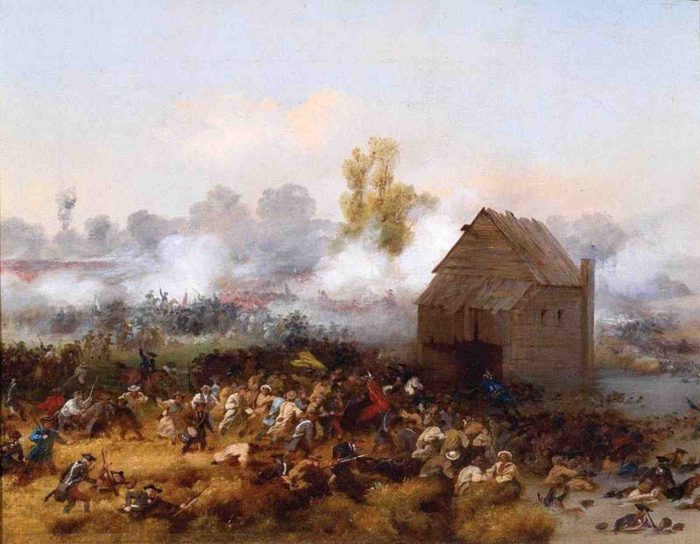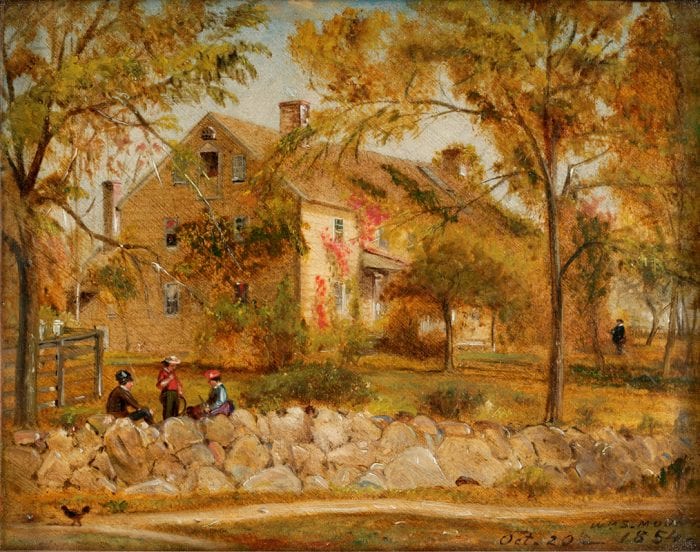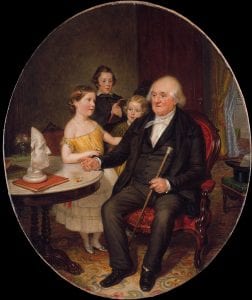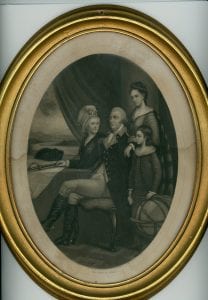By Beverly C. Tyler
“The first major battle in the American Revolution following the Declaration of Independence was fought [beginning on August 27th] 1776 on the western part of Long Island in Brooklyn. This proved to be the largest battle of the entire war. It resulted in a devastating loss for General Washington. His army was vastly outnumbered. Many of his farmer-soldiers had no bayonets, little ammunition, and almost no training. They were fighting the most experienced, strongest and best-equipped army in the world.” (Three Village Historical Society exhibit SPIES!)
The British attack on American forces was described by Sir William Howe, British commander. “ … the British, with Colonel Donop’s corps of Chasseurs and Hessian Grenadiers, disembarked near Utrecht on Long Island without opposition, the whole being landed, with 40 pieces of cannon, in two hours and a half, under the direction of Commodore Hotham-Lieutenant-General Clinton commanding the first division of troops. … The general learning … that the Rebels had not occupied the [Jamaica] pass, detached a battalion of Light-infantry to secure it; and advancing with his corps … possessed [Brooklyn] Heights … the attack … by the main body of the Army … was commenced by the Light-infantry and Light-Dragoons upon large bodies of the Rebels … had they been permitted to go on, it is my opinion they would have carried the redoubt; but … I would not risk the loss that might have been sustained in the assault, and ordered them back.” (Long Island as America, A Documentary History — pages 75-78)
The next day British and Hessian troops pressed the attack on American lines and won the day. As detailed by Sir William Howe, “The force of the enemy … was not less, from the best account I have had, than ten thousand men … Their loss is computed at about three thousand three hundred killed, wounded, prisoners, and drowned, with five field-pieces and one howizer taken. In the evening of the 27th, the Army encamped in front of the enemy’s works. On the 28th, at night, broke ground six hundred yards from a redoubt upon their left, and on the 29th, at night, the Rebels evacuated their entrenchments … with the utmost silence … At daybreak on the 30th, their flight was discovered.”
General Howe’s estimate of American killed, wounded and captured is more than double the current estimate. By not pressing the attack, General Howe allowed time for the retreating American troops to regroup and eventually escape back to Manhattan. During the attack, General Washington sent additional troops from Manhattan to Brooklyn, including 15-year-old Private Joseph Plumb Martin, a native of Connecticut who would, years later, write a detailed story of his seven years in the army. Martin’s account is the singular most important recollection by an ordinary soldier telling the story of the Revolutionary War from the bottom up. Martin was in New York City with his regiment in June of 1776. In August, following the British attack, he wrote,
“… the regiment was ordered to Long-Island, the British having landed in force there. . . We soon landed in Brooklyn … marched up the ascent from the ferry, to the plain. We now began to meet the wounded men, another sight I was unacquainted with, some with broken arms, some with broken legs, and some with broken heads. The sight of these a little daunted me, and made me think of home, but the sight and thought vanished together.” During the following day, Martin noted that the battles were often fought within sight of his unengaged regiment. The next day, as he wrote, “We were soon called upon to fall in and proceed … Just at dusk, I, with one or two others of our company, went off to a barn, about half a mile distant, with intent to get some straw to lodge upon, the ground and leaves being drenched in water, and we as wet as they … When I arrived [back at the regiment] the men were all paraded to march off the ground … We were strictly enjoined not to speak, or even cough, while on the march. All orders were given from officer to officer, and communicated to the men in whispers. What such secrecy could mean we could not devine. We marched on, however, until we arrived at the ferry, where we immediately embarked on board the batteaux, and were conveyed safely to New-York.” Memoir — Joseph Plumb Martin
Thus began Washington’s miraculous escape, the evacuation of troops from Long Island under the very noses of the British. It continued all night and into the next morning when a thick fog gave cover as the last of the soldiers were transported across the East River to Manhattan. Setauket’s Benjamin Tallmadge, also in his first engagement with the British, wrote in his autobiography a graphic account of the retreat after the battle.
“On the evening of the 29th, by 10 o’clock the troops began to retire from the line in such a manner that no chasm was made in the lines … General Washington took his station at the ferry, and superintended the embarkation of the troops. It was one of the most anxious, busy nights that I ever recollect, and being the third in which hardly any of us had closed our eyes in sleep, we were all greatly fatigued … When I stepped into one of the last boats … I left my horse tied to a post at the ferry … The troops having now all safely reached New York, and the fog continuing as thick as ever, I began to think of my favorite horse, and requested leave to return and bring him off. Having obtained permission, I called for a crew of volunteers to go with me, and guiding the boat myself, I obtained my horse and got off some distance into the river before the enemy appeared in Brooklyn. As soon as they reached the ferry we were saluted merrily from their musketry, and finally by their field pieces; but we returned in safety.”
Much of the Battle of Brooklyn was fought across what is now Green-Wood Cemetery’s grounds. For years, the Old Stone House, as pictured in Alonzo Chappel’s painting, has partnered with Green-Wood to commemorate this important historic event on their grounds. For more information, see the list of events for Battle Week Aug. 20 through Aug. 28 at: theoldstonehouse.org/event/battle-week-8-20-8-28/2022-08-20/.
Beverly C. Tyler is a Three Village Historical Society historian and author of books available from the society at 93 North Country Road, Setauket. For more information, call 631-751-3730. or visit www.tvhs.org.









